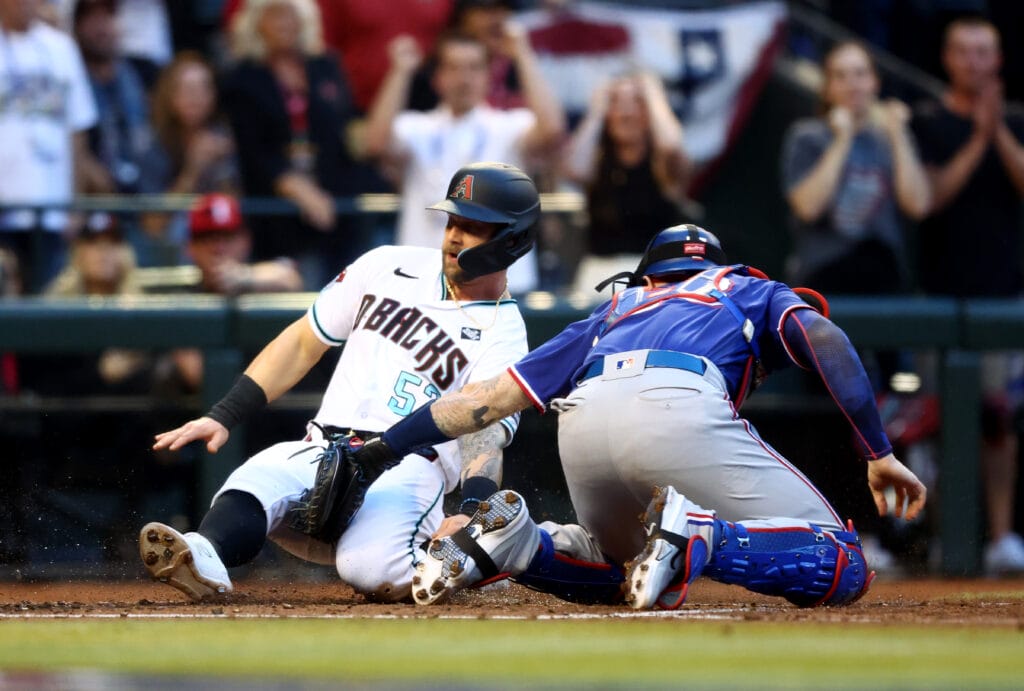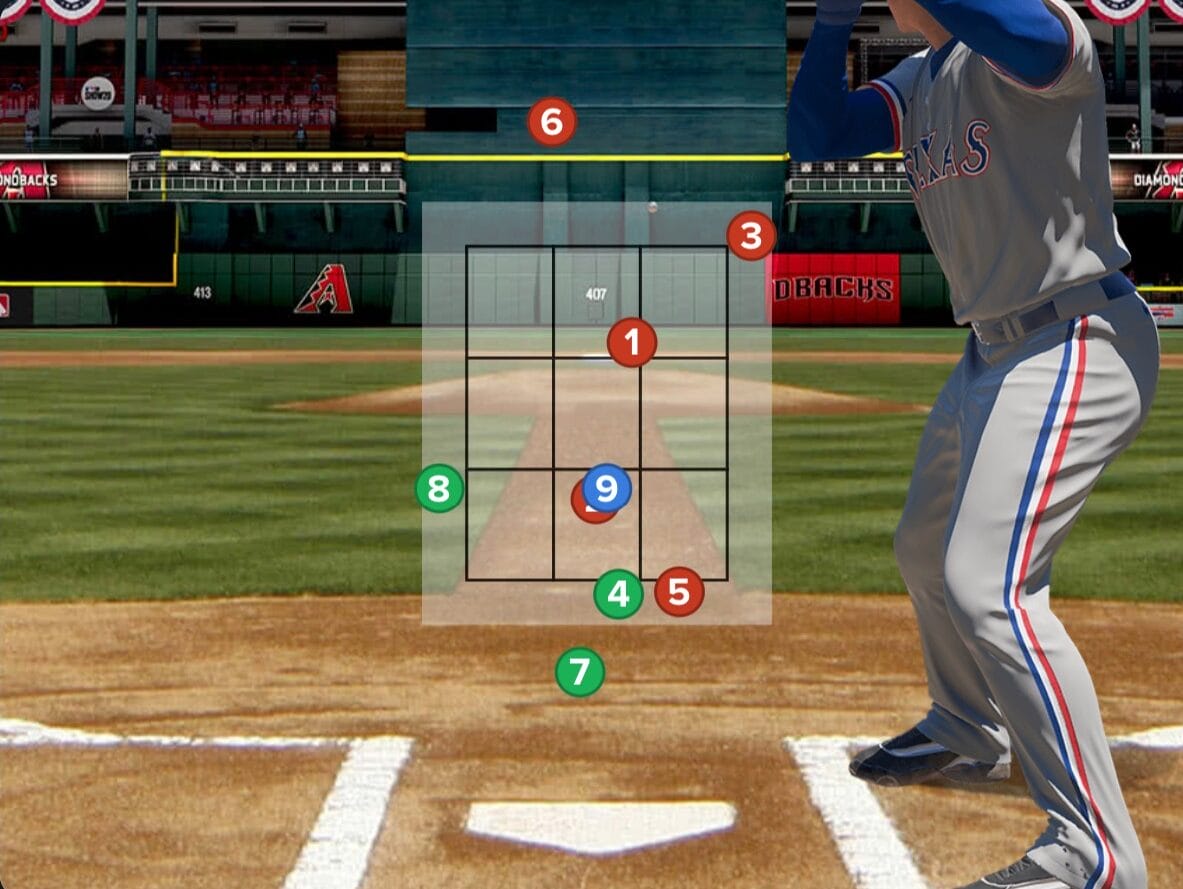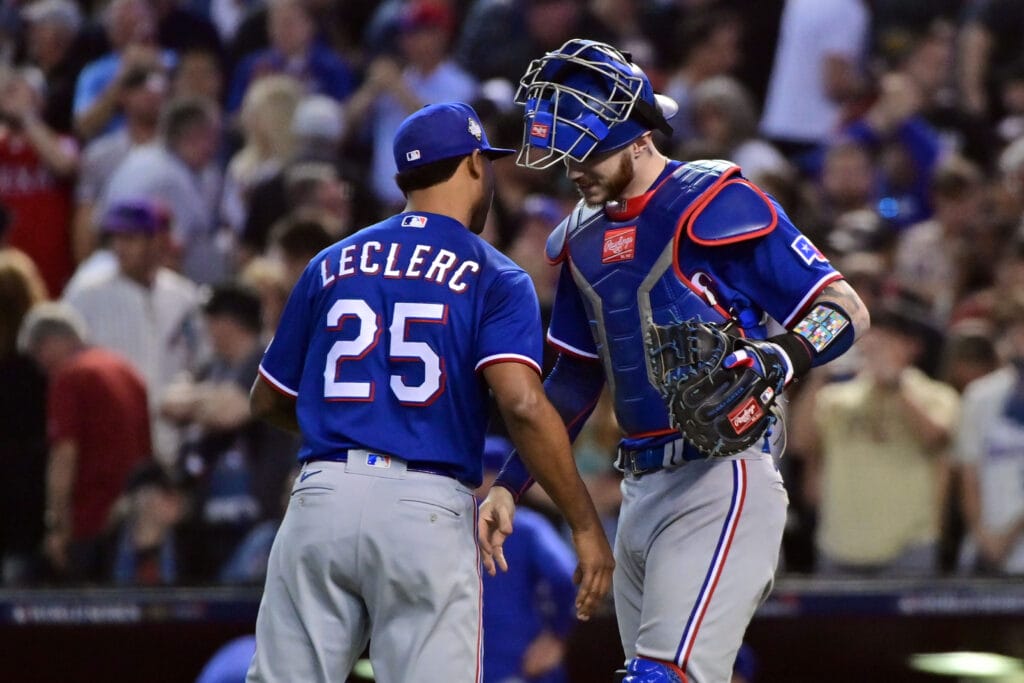© 2025 ALLCITY Network Inc.
All rights reserved.

If you really think about it, every baseball game can be dumbed down to a list of what-if questions.
What if so-and-so knocked in that run from second instead of striking out?
What if that infield grounder did not take such a mean hop?
What if the umpire actually called such-and-such borderline pitch a strike as he should have?
Often times, these questions are hardly worth considering; the losing team just needs to play better and move on.
In other cases, they are more interesting to ponder, especially in baseball. After all, luck plays a disproportionately large role on batted ball outcomes. Small mistakes — one pitch, one baserunning mishap — can change the entire complexion of a game. Umpires are, well, human.
If ever there was a time to actually spend some time to play a little bit of what-if, it was the Diamondbacks’ 3-1 loss to the Texas Rangers on Monday.
There is no way to reasonably argue that they should have won, but there are a lot of little things that did not go their way — some in their control, some out of it — that, had they gone differently, could have had a significant impact on the game.
So, here are five what-if questions that, mind you, we will never get answers to, but can help frame exactly what happened at Chase Field on Monday night.

1. What if Diamondbacks’ Christian WAlker had not missed Tony Perezchica’s stop sign in the second inning?
Max Scherzer entered Monday’s game with a 9.45 ERA in two starts in the postseason, and the Diamondbacks appeared to be getting to him in the second inning.
Cleanup hitter Christian Walker doubled on the first pitch he saw, and Tommy Pham followed with a liner that dropped in front of Rangers right fielder Adolis García. Several seconds later, Walker ran through a stop sign from third base coach Tony Perezchica and was gunned down at home plate by García, whose arm is widely regared as one of the best in the game.
“Honest mistake,” Walker said after the game. “I got a late read from my angle. It was hard to tell how hard the ball was hit.
“Had my head down trying to make a tight turn around third, really trying to get to the plate, and the last time I looked at [Perezchica], he was waving, and I never saw the stop sign.
“Just probably just trying to do too much there, should have been more aware.”
Instead of having runners at the corners and nobody out, the Diamondbacks just had Pham, who reached second on the throw, in scoring position with one out.
Lourdes Gurriel Jr. then popped out to second and Alek Thomas grounded out on a chopper that deflected off pitcher Max Scherzer, ending the inning.
“That was a huge momentum swing,” manager Torey Lovullo said. “A lot of people liked to play out the next set of circumstances — a pop up and a ground ball off the pitcher’s arm. But who knows? The timing, everything would have been different; we may have scored a bunch of runs. You just don’t know what would have happened.”

2. What if home plate umpire Alfonso Marquez had rung up Nathaniel Lowe in the third inning?
Diamondbacks starter Brandon Pfaadt had faced the minimum through two innings when Rangers first baseman Nathaniel Lowe came up to lead off the third.
Lowe foul tipped a first-pitch fastball, took a sinker over the middle of the plate for strike two and fouled off a high-and-in four-seamer. The count was 0-2.
Then, Pfaadt threw what appeared to be a perfect called third strike at the knees, but home plate umpire Alfonso Marquez did not agree. Lowe was still alive in a 1-2 count.

Five pitches later, Lowe smoked a center-cut fastball into the outfield for a lead-off double.
Fortunately for the Diamondbacks, Pfaadt responded nicely by retiring the next two batters, Josh Jung and Leody Taveras, on a strikeout and groundout, respectively. Had Pfaadt gotten the call on that 0-2 sinker to Lowe, there would have been three outs. But Lowe was standing at second, and there were still only two.
That brought up lead-off man Marcus Semien, who lined an RBI single into left field. The Rangers had a 1-0 lead.
On the very next pitch, Rangers No. 2 hitter Corey Seager blasted a 421-foot home run at 114.5 mph off the bat. Suddenly, it was 3-0 Rangers.
No umpire is perfect, and it would be ridiculous to blame Marquez entirely for the three runs the Rangers scored in the inning. There was nothing cheap about Seager’s homer. Maybe he would have hit it the next inning instead.
Nonetheless, this is, at the very least, an interesting what-if question.

3. What if Brandon Pfaadt had executed his first pitch to Corey SEager in the third inning?
After getting Seager to ground out on a first-pitch sinker in his first at-bat, Pfaadt was not as fortunate in Seager’s second time up.
Pfaadt intended to throw his first-pitch changeup down and away, but he wound up throwing it middle-in, and Seager did what he often does with such mistakes.
“Just yanked it,” Pfaadt said after the game. “It was right after the mound visit. We had a good game plan going into that at-bat and just didn’t make the right pitch.”
Sometimes, hitters let with first-pitch mistakes slide. Pfaadt expected Seager to be aggressive, however, and he certainly was.
The Diamondbacks saw Seager’s first-pitch aggressiveness firsthand in Game 1, when he ambushed an elevated Paul Sewald fastball for a game-tying homer.
Pfaadt’s changeup command has been spotty throughout this rookie season. At times, he has ditched the pitch entirely, sticking only with his four-seamer, sinker and sweeper.
Up to that point in the game, Pfaadt had thrown only four changeups, two of which were left elevated in the zone. Perhaps he should have gone with a first pitch he commands more consistently with a hitter of Seager’s caliber at the plate.
Pfaadt pitched quite well the rest of the game, and ultimately allowed just those three third-inning runs in his 5 1/3 innings of work. Nonetheless, the offense was only able to muster one run all night.

4. What if Max SCherzer had not left the game early due to injury?
Based on his past two postseason starts, the Diamondbacks did not expect Max Scherzer to throw more than 70 pitches in Game 3, but they did expect him to throw more than 36.
And yet, because of what was eventually deemed lower back tightness, Scherzer left the game after just three innings and 36 pitches.
The Diamondbacks notched two hits and two walks in those first three frames against him, but they had nothing to show for it.
Manager Bruce Bochy turned to Jon Gray, whom USA Today’s Bob Nightengale had reported would start for Texas in Game 4, to give some length in Scherzer’s absence.
The Diamondbacks struggled against Gray in Game 1 — he gave up only one hit and struck out four of the six batters he faced — and they did again in Game 3. In three innings of work, Gray allowed only one hit, punching out three.
“It’s a funny thing,” Walker said, “because you game plan for Scherzer and the second time through the lineup, obviously, you never know, but I’m going to bet on our offense second time, third time through a lineup.”
The Diamondbacks never got that chance against Scherzer. Gray, meanwhile, continued to see his stuff tick up working out of the bullpen after pitching the entire regular season as a starter.
“I feel like he’s been throwing that slider harder than what I remember,” Walker said, “even the heater, it’s kind of straight, it’s got a little pull-cut to it too, but that slider, it’s late and it’s hard, so just still trying to figure out that shape.”
In the regular season, the Diamondbacks faced Gray twice, first on May 2 and again on Aug. 22. In the latter of those two outings, Gray’s four-seamer averaged 96.2 mph and his slider averaged 88.5. On Monday, the heater averaged 96.9, the breaking ball 89.8.
The silver lining for the Diamondbacks is that Gray is now no longer available to start Game 4. Instead, the Rangers will turn to left-hander Andrew Heaney, who has notched just one strikeout and allowed four runs over six innings in the postseason.
The Diamondbacks will start reliever Joe Mantiply. He also served as their opener for Game 4 of the NLCS against the Philadelphia Phillies.

5. What if Alfonso Marquez had called ball four to GAbriel Moreno?
Marquez did not have a great night behind the plate, but his most noteworthy blunder came in the bottom of the ninth inning with Gabriel Moreno at the plate.
In a 3-1 count, Moreno took a pitch that was well off the outer edge. Marquez called it a strike, turning what would have been a walk into a full count. Moreno grounded out on the next pitch.
“I’m not happy about it,” Lovullo said. “I know that if they were off the plate and there were missed calls, they’ve got to tighten it up.”
In defense of Marquez, Lovullo said that the “umps are doing their absolute best” and the “ball is moving at a high velocity.”
Moreno declined to speak with the media after the game.
Walker was in the on-deck circle, but he did not have a good view of the pitch.
“From the on-deck circle,” Walker said, “it’s hard to tell. Crowd reaction didn’t like it. But, yeah, it is what it is. Honestly, that’s s— we’ve been dealing with all year. It’s nothing new.”
It is worth noting that the second pitch of the Moreno at-bat was called a ball but clearly appeared to be a strike. In a sense, the two calls canceled each other out. Nonetheless, that 3-1 called strike was Marquez’s biggest mishap of the night.
“There were some calls that didn’t go our way today,” Lovullo said. “Was that the difference in the game? I don’t know. I don’t think so.
“They took advantage of it, let’s put it that way. If they were missed calls, they took advantage of it and won the baseball game the way they needed to.
“I can go throw my hat in the office, do all I want to do in there. I may or may not. I probably will. But I’ve got to find a way to turn the page and work through the frustration of what happened today.”
Follow Jesse Friedman on X (formerly Twitter)
Top photo: Joe Camporeale/USA TODAY Sports
Get Arizona's Best Sports Content In Your Inbox!Become a smarter Arizona sports fan with the latest game recaps, analysis and exclusive content from PHNX's writers and podcasters!
Just drop your email below!
Comments
Share your thoughts
Join the conversation



